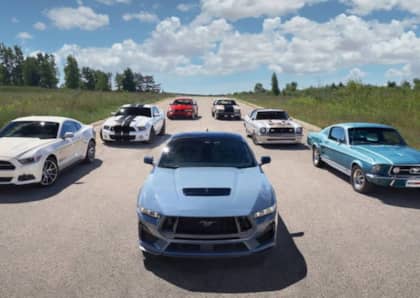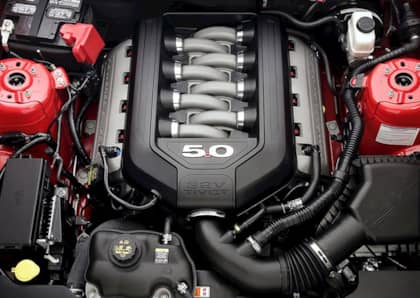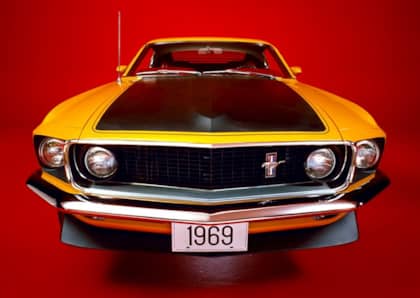The Exotic Small Block: How Ford's DOHC 4.6 Engine Changed the American V8 Forever
When you think of the American V8 engine, it's likely still overhead-valve, pushrod engines that come to mind. The same basic design that's been powering American cars and trucks since the '40s and '50s.
And for GM and Chrysler, it's still those same pushrod V8 engines that power their modern performance cars, pickup trucks and full-size SUVs.
But over at Ford, the company has long left the pushrod design behind, and it was in the early '90s that the company introduced a groundbreaking new V8 that helped put them on their current path.

Bye Bye 5.0, Hello 4.6
It started in with the introduction of the all-new modular SOHC 4.6 liter two-valve V8 engine in the 1991 Lincoln Town Car, and within a few years the SOHC 4.6 would replace the old 5.0 liter pushrod V8 across Ford's lineup—including in the F-150 and the Mustang GT.

But along with the high volume 4.6 SOHC, Ford was also hard at work on another version of the modular 4.6 V8 that would aim to take its luxury and performance cars to a new level.

While displacement was the same, this engine would use an aluminum block and new double overhead-cam heads with four valves per cylinder—something that up until then was really only seen on limited production V8s from smaller automakers.
Hot Rod Lincolns
The first car that used the new 32-valve DOHC 4.6 was the 1993 Lincoln Mark VIII, which made 280 horsepower and 285 pound feet of torque.

This may seem like a modest number by today's standards, but back in '93 the top dog Mustang Cobra only made 235 horsepower from its upgraded version of the pushrod 5.0 small block.

Interestingly, Lincoln also used a detuned 260 horsepower version the 32-valve 4.6 V8 under the hood of the 1995 Continental sedan—driving the front wheels.

Enter the Cobra
For the 1996 model year, the Mustang left the aging pushrod V8 behind for good, with the 5.0 in the Mustang GT replaced by the SOHC 4.6 modular V8. But the bigger story was the 1996 Mustang SVT Cobra.

The Cobra was the performance flagship of the Mustang lineup, and for 1996 it was powered by a special version of the DOHC 4.6 that was hand-built by SVT workers.

The '96 Cobra made 305 horsepower and 300 pound feet of torque, helping to put it on even ground with the larger 5.7L LT1 V8 GM was using in the Camaro and Trans Am.

But while the LT1 was basically an upgraded version of the ancient small block Chevy, the SVT Cobra had a character all its own. The wide DOHC heads dominated the Cobra's engine bay, and its rev-happy nature and unique sound established the SVT Cobra as a new type of muscle car.
A New Era Begins
While many Mustang fans were lukewarm to the SOHC 4.6 that replaced the beloved 5.0, the powerful and exotic DOHC 4.6 helped win many of them over. It also laid the groundwork for a generation of high performance Mustangs to come.

Ford continued to tweak and upgrade its four-valve modular V8s, eventually adding a supercharged version in the 2003 SVT Cobra, along with larger displacement 5.4 liter versions and later the current 5.0 version better known as the Coyote.
Not only was the Ford DOHC 4.6 a game-changer for American V8 engines, it was so well received that it was also used for non-Ford specialty vehicles like the Panoz Roadster and Panoz Esperante, and a version of it even powered by the Koenigsegg CCR of the mid 2000s.

While there's no doubt some Ford traditionalists will never stop missing the old 302/5.0, the introduction and development of these overhead cam V8s have not only kept cars like the Mustang on top of their game, they've also helped given Ford's modern V8s an appeal that's all their own.

Just ask anyone who has had the unique pleasure of revving out the current 480 horsepower 5.0 Coyote to its 7,500 RPM redline...
More From Driving Line
For a continuing part of the Ford modular V8 story, we break down the history of 5.0 Coyote engine right here.











